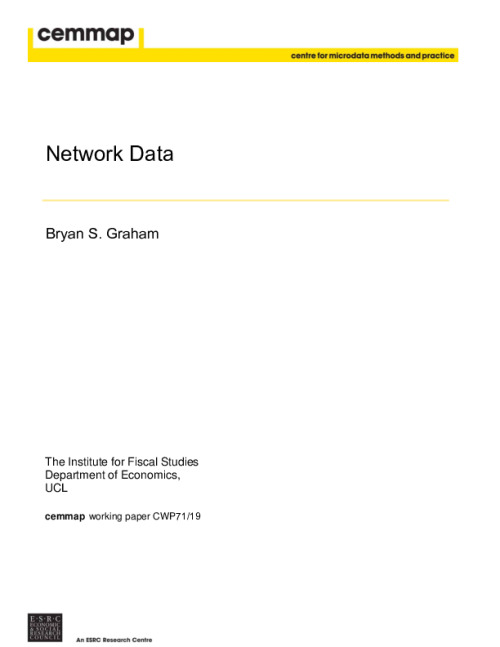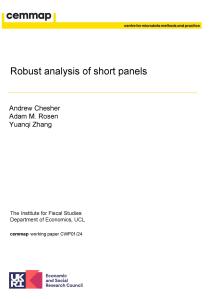Downloads

CW7119-Network-Data.pdf
PDF | 3.31 MB
Many economic activities are embedded in networks: sets of agents and the (often) rivalrous relationships connecting them to one another. Input sourcing by firms, interbank lending, scientific research, and job search are four examples, among many, of networked economic activities. Motivated by the premise that networks’ structures are consequential, this chapter describes econometric methods for analyzing them. I emphasize (i) dyadic regression analysis incorporating unobserved agent-specific heterogeneity and supporting causal inference, (ii) techniques for estimating, and conducting inference on, summary network parameters (e.g., the degree distribution or transitivity index); and (iii) empirical models of strategic network formation admitting interdependencies in preferences. Current research challenges and open questions are also discussed.
Authors

University of California, Berkeley
Working Paper details
- DOI
- 10.1920/wp.cem.2019.7119
- Publisher
- The IFS
Suggested citation
Graham, B. (2019). Network Data. London: The IFS. Available at: https://ifs.org.uk/publications/network-data (accessed: 19 April 2024).
More from IFS
Understand this issue

Gender norms, violence and adolescent girls’ trajectories: Evidence from India
24 October 2022

Raising revenue from closing inheritance tax loopholes
18 April 2024

Sure Start achieved its aims, then we threw it away
15 April 2024
Policy analysis

IFS Deputy Director Carl Emmerson appointed to the UK Statistics Authority Methodological Assurance Review Panel
14 April 2023

ABC of SV: Limited Information Likelihood Inference in Stochastic Volatility Jump-Diffusion Models
We develop novel methods for estimation and filtering of continuous-time models with stochastic volatility and jumps using so-called Approximate Bayesian Compu- tation which build likelihoods based on limited information.
12 August 2014

Is there really an NHS productivity crisis?
17 November 2023
Academic research

Sample composition and representativeness on Understanding Society
2 February 2024

Understanding Society: minimising selection biases in data collection using mobile apps
2 February 2024

Robust analysis of short panels
8 January 2024